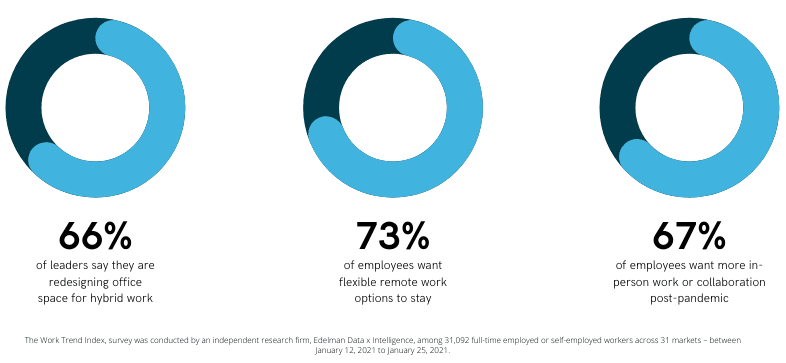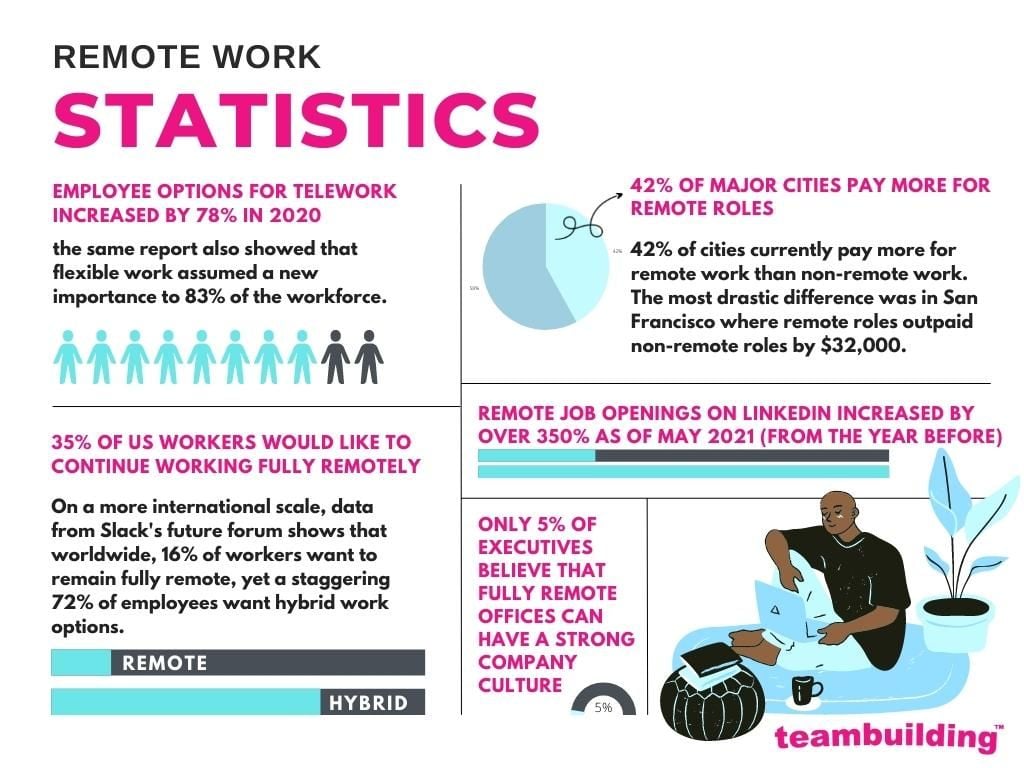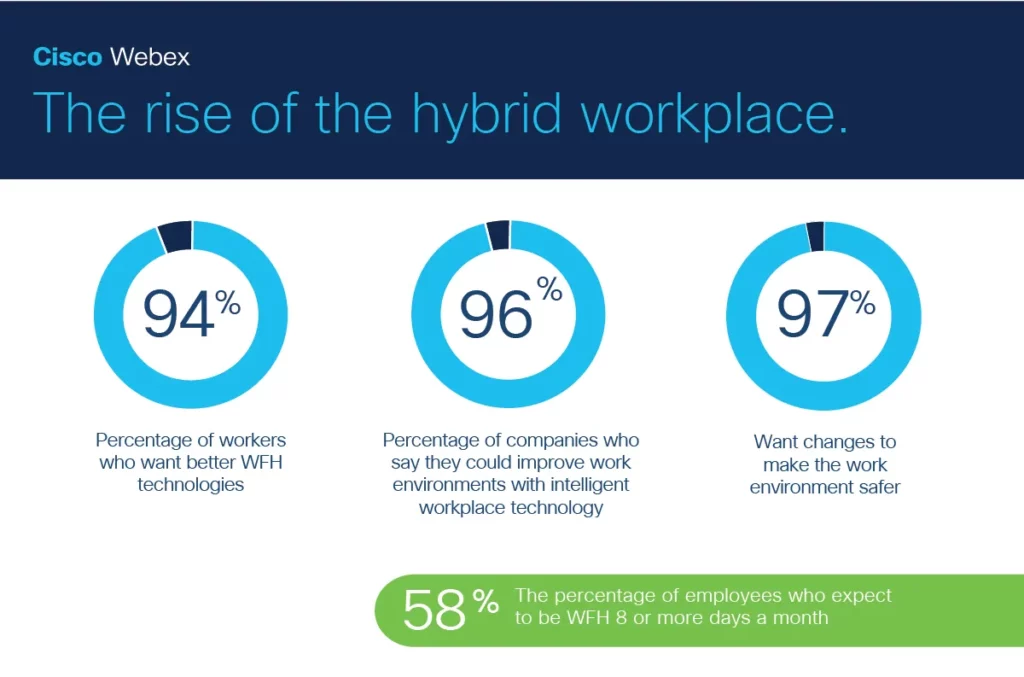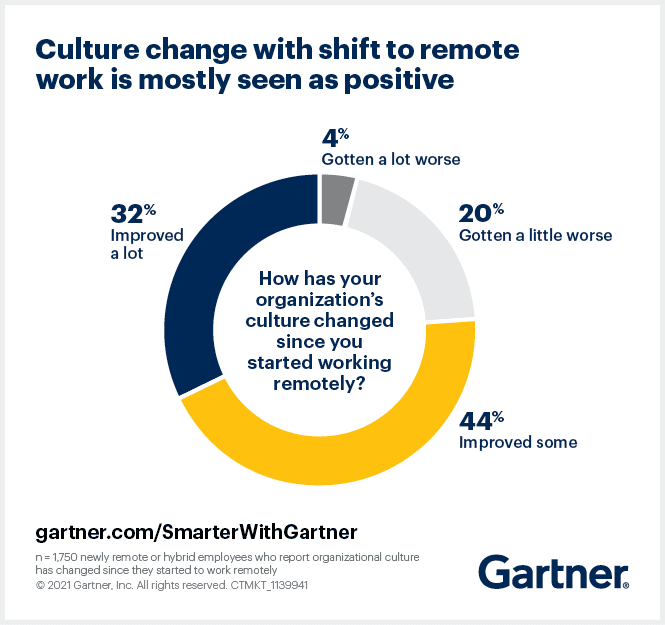Hybrid Work vs. Remote Work: A Guide For Innovating Businesses
The viability of office life is one of the most discussed issues in business today. If you have to choose between them, knowing the advantages and disadvantages of remote working, hybrid working, or working at an office full-time will help you decide.
Employers worldwide are already considering more working options to accommodate the modern workforce and improve customer relationships.
Some workers will be required to decide what type of return to work they desire as businesses start to make judgments about the future of the workplace. There are several things to think about, whether you decide to stay at home, work full-time at the office, or choose a hybrid work life.
Contents
What Does it Mean to Work Remotely?
“Remote” refers to decentralized and consequently spatially split labor done away from the business offices. Many businesses that focus entirely on remote work operate without a central office. The area where the job is done doesn’t have to be a home office; it may be a workspace, on a park bench, on a beach, or anywhere else.
What Are the Requirements for Working Remotely?
We provide a quick outline of the prerequisites for working remotely below:
Tasks are available online
The availability of remote software to complete activities entirely online and from any location affects whether or not a corporation chooses the remote model. It is typically doable for just administrative tasks. Therefore, remote employment is typical and in demand in the marketing, administrative, design, financial, consulting, and information technology fields.
Web connection
Since remote work is online, a quick, dependable, and secure internet connection is needed to complete tasks and even for secure video calls. A cellular internet connection is required if employees are not working from their home offices.
Excellent communication system
With remote working, employees can work anywhere, but this presents several challenges, such as varying time zones. Team and corporate communication are much more challenging as a result. Efficient remote working arrangements require a highly organized communication system and established standards.
What Are the Advantages of Remote Working?
Nowadays, employees actively seek remote working benefits and companies who provide this modern work arrangement gain points for their branding.
Companies that use remote workers can benefit from the following features:
Attracting a global talent pool
Jobs are no longer location-specific, allowing for international recruitment. As a result, hiring remote employees is much easier. Talented individuals from across the world may be attracted to the team and integrated without worrying about moving or undergoing challenging integration processes.
Increased productivity
Many workers spend several hours each day traveling to and from work, which increases stress and lowers productivity. The commute is eliminated with remote workstations, allowing for a more laid-back attitude to everyday business.
Reducing running costs
Naturally, you save on running costs like rent, heating, power, and maintenance if you don’t have to keep office space. Instead, you may invest in other crucial areas of the business, like the well-being of the staff and the ergonomics of their remote workspaces.
Reducing your environmental impact
Maintaining a primary business site requires resources and increases CO2 emissions in various ways. It could be through excessive power use, waste production, and commuting between homes and the office.
Remote working mainly requires virtual solutions such as building a data warehouse. It is now one of the most ecologically friendly working models and a popular choice among employees who care about the environment.
What Are the Disadvantages of Remote Working?
Despite its many benefits, remote work also has potential drawbacks that you may need to consider.
Not appropriate for every job
Regardless of your perspective, not all jobs can be remote. In manufacturing and maintenance settings where work is done with machines or necessitates specialized equipment, off-site work is impossible.
Isolated employees
Many remote employees feel isolated when working remotely with their team members. Never underestimate the effects of a lack of social interaction among employees.
Complex communication systems
There are different working time models frequently used in conjunction with remote work. It is impractical for all employees to be online at once, especially when various working hours span multiple time zones. Naturally, this may hinder productivity and make communication incredibly difficult.
External intrusion
People who operate in very remote regions or among children or animals during work hours are more likely to become distracted by them. Additionally, it becomes much harder to distinguish between work and play, which can significantly reduce productivity and attention.
What Is a Hybrid Work Environment?
The hybrid work arrangement works if you want to provide your staff the option of working remotely, but you don’t want them to have full-time home offices. This model is growing in popularity among both employers and employees.
It gives your employees a taste of both worlds. Employees can come to work whenever they choose if they like the focused office environment, want to participate in social activities, or need to address project-related issues.
What Are the Benefits of Choosing Hybrid Work?
A hybrid work arrangement has the following advantages.
1. Contented and motivated workers
Under the hybrid model, employees have the flexibility and freedom to decide which days they will come into the office and which days they will work from home. Increased flexibility promotes a balanced workload, team participation, and a better work-life balance.
2. Organizational improvements
Fewer employees are present in the office on most days, with a mixed work arrangement. It will be less congested, and you can design an effective workplace for on-site employees.
3. Reduced operating expenses
Avoid running out of funds by choosing a mixed work model. You will need fewer desks, printers, computers, or other office equipment. Your utility costs may even go down.
Businesses can make significant savings by choosing the hybrid model, particularly in urban locations with pricey real estate. Hybrid work is beneficial for the financial status of your staff as well. They’ll spend less on beverages, lunches, regular commutes, etc.
4. Better corporate culture
Executives are always concerned about how a hybrid model would affect the corporate culture they have worked so hard to create locally.
Giving workers autonomy over their schedules can be motivating and an effective substitute for quality culture training. Employees are more likely to arrive at work motivated and prepared to contribute to the company’s goals and culture.
What Are the Drawbacks to Hybrid Work?
There are disadvantages to consider with every model. Here are a few downsides to going the hybrid route:
1. Collaboration with remote workers is more challenging
There is no way to simulate impromptu conversations occurring at the physical office. Communication between remote and on-site workers may be harder, and they may need a cloud collaboration tool for business interactions.
2. Burnouts
Even under a hybrid approach, burnout can infiltrate the workplace if it isn’t addressed. Your remote crew may put in more time and take fewer breaks than those who work on-site. They could even feel bad about taking the afternoon off for themselves and overcompensate by staying at work longer.
Conversely, your on-site staff may need to cope with commuting to the workplace, personal routine adjustments, or family issues.
3. Poor adjustment to hybrid schedules
Your employees’ schedules will be more varied as you have greater freedom. You can experience resource problems if there isn’t a reliable and simple way to keep track of personnel scheduling. To address these challenges, adopting staff scheduling platforms can streamline the process, ensuring optimal resource allocation and eliminating common scheduling conflicts.
4. Not appropriate for all industries
There are several sectors where this work model is unsuitable. Manufacturing, education, healthcare, and retail are a few of these. You will probably have to continue using the standard work system if you work in one of those sectors. A mixed work approach may be more harmful than beneficial.
Essential Tips to Overcome the Challenges of Working Models
The difficulties of a hybrid remote work environment concern the company’s remote workers. As a result, remote and hybrid models share the same rules for resolving these difficulties.
Here are some clever strategies for overcoming the difficulties of remote work:
1. Establish policies for remote work
Policies for remote work establish what is permitted and prohibited for office workers. It concentrates on crucial factors like when, where, and how employees should work.
It also covers internet needs and minimal equipment, logging labor hours, and the communication method for meetings. The entire staff will be mindful of the expectations if the regulations are spelled out clearly in the workplace policy.
2. Use asynchronous communication techniques
Asynchronous communication is when you don’t expect an immediate response from your team members. They will work on a particular assignment in their own time once you provide them with the necessary information. This removes the demand of always being available and providing real-time responses to inquiries. Employee productivity and efficiency will increase with this form of communication.
3. Change how meetings are run
Any group, whether it is remote or not, must hold meetings. These meetings might become chaotic or useless in a distant setting if they are not properly organized and executed. You won’t need to conduct meetings at each stage of the process if you use asynchronous communication.
However, you’ll still want weekly reports or even informal team gatherings. Planning these meetings and considering the various time zones of remote workers is quite beneficial.
Making the Right Choice
Choosing between both models is an unenviable task. The remote approach saves on office expenses but requires significant team-building efforts and communication expenses.
Additionally, you risk health effects for anyone poorly suited to working from home. As everyone chooses where they are most comfortable, hybrid working seems more adaptable. The model that works best for your business will depend on its type and industry, as well as the unique requirements of its employees and customers.






